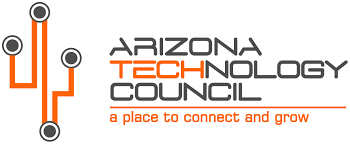Over the past 20 years, the U.S. Semiconductor Industry has declined from over 35% global market share to less than 12%, yet the current global chip shortage is poised to propel the US back into a leadership position with new investment and production expansion. Semiconductors are used to power a wide range of devices and entire industries – from smartphones to cloud servers to industrial automation to powering the automotive and defense industries.
While accounting for only 0.3% of the total US manufacturing output, they directly impact over 12% of the US’s $20 trillion annual Gross Domestic Product (GDP). For example, in the automotive industry, electronics now account for 40% of the cost of a new car, and chip shortages are disrupting production and could reduce overall US auto production in 2021 by up to 6%, impacting both jobs and economic growth.

Semiconductor 101: The Basics You Need to Know
In last month’s newsletter, we shared how the semiconductor industry will be key in restarting not only the US economy, but also the global one, after COVID-19. Over the last 2 decades, US production in this area has indeed fallen in global market share, but the pandemic has precipitated a shortage around the world, giving America an opening to regain a foothold in semiconductors. But what exactly is a semiconductor? What does it do? And where are they used in everyday life?

Semiconductors exhibit conductivity between conductors (which are usually metals) and non-conductors or insulating materials (like ceramics or glass). They can be just one element (such as silicon) or a combination (cadmium selenide, for example). There’s even something called doping, where an impurity is added and this makes the conductivity properties of a material change. Anything further about the “recipe” for making one isn’t something we are going to dive deeper into, but we wanted to share the basics.
One could argue the beginning of the industry to be all the way back in 1821! It all started with experimenting on materials to learn of their electrical properties, and Thomas Johann Seebeck was the first researcher to realize semiconductors existed. There were others who followed with more discoveries; perhaps the next most famous would be in 1897 with JJ Thomson’s detection of the electron. Two early experiments using this knowledge of semiconductors include:
- 1880: A beam of light and selenium’s sensitivity to it was employed by Alexander Graham Bell to move sound.
- 1883: A metal plate covered in selenium and gold was the first working solar cell, made by Charles Fritts.
Fast-forwarding to the modern world – in a nutshell, if you have any kind of electronic device, you also have a semiconductor. Cell phones, radios, television sets, video games, LED bulbs, computers, digital cameras, your car, and laundry and kitchen appliances all use semiconductors. They are also an important component of money-spitting ATMs, “the cloud”, the Internet, transportation modes (like trains and cars), pharmacies filling life-saving prescriptions, medical lab work and tests, national defense, and the storage of data in any of these.
Semiconductors, as you’ve probably noted over time, in your own life – make devices more compact and reliable, lower the cost to you, and increase battery efficiency. Semiconductors fuel an incredible array of devices and even entire industries, while making up just 0.3% of the total US manufacturing output. Over 12% of the US’s $20 trillion annual Gross Domestic Product (GDP) is directly impacted by the industry. In automotive, electronics now add up to 40% of the cost of a new car.
The need for our superior cleanroom products in this industry is not the only reason we are so excited about it! Arizona, the home of our headquarters, is now also the home of $30 billion in investments and 5,000 expected job openings, from Intel, Taiwan Semiconductor, and the federal government. The influx of additional employees to existing factories, plus the building of 2 brand-new facilities, means surrounding businesses will prosper as well. After all, these workers need places where they can live, eat, play, and shop!
Arizona is not the only state that will benefit, as the federal government’s 2021 National Defense Authorization Act included “CHIPS for America”, and the industry has requested up to $22 billion in funding, anticipated to invigorate construction of up to 14 new fabrication plants and draw $174 billion in private investment funds. The semiconductor industry is definitely going to be instrumental in the global and US economies recovering from 2020’s pandemic.
Teknipure is a Proud Member of

To learn more or to request technical data sheets, call us at 844.309.2376 or email us at Info@Teknipure.com. You may request samples or find quality certificates online.


